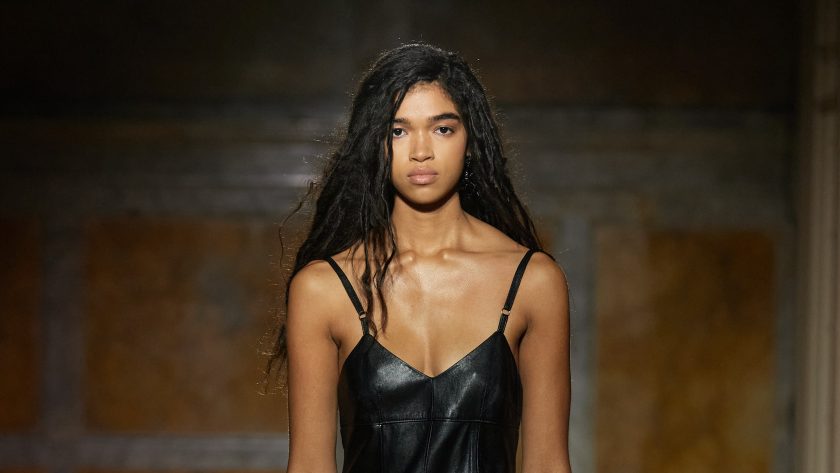This year marks Stuart Vevers’s tenth anniversary at Coach. “I was reflecting on it a little, not too much,” he said the day before during a preview at the brand’s Hudson Yards headquarters. “I wanted to capture New York archetypes—my New York archetypes—but rather than look at vintage images of that time I wanted to remember it in my own way.” He added, “It’s a very personal collection.”
In a way, New York City played the starring role here: the show took place at the iconic main branch of the New York Public Library near Bryant Park (another iconic fashion landmark), with Vevers’s children and father present (it was the first time he’d attended a fashion show). It’s the city where the British designer met his husband and started a family; the city where he’s been hard at work cementing the legacy of Coach as “America’s House of Leather,” especially what it means to be a house of leather in 2023, when so many conversations revolve around topics of sustainability and climate change. That Vevers has made these an important part of his collections, working with upcycled leather and denim, as well as regenerated cotton and leather, made the rare appearance by an anti-leather protester all the more strange, though it’s worth noting that security did not force her off the catwalk. “I respect all points of view,” Vevers said later at the celebratory dinner.
But what about the clothes? Although Vevers was in a wistful mode, this wasn’t about bringing back the greatest hits from his early collections. Rather, it was a continuation of the shapes and experiments on construction and silhouette that he’s been developing in recent seasons. The show opened with a black slipdress made from pieced-together leather with exposed stitches, moto boots, and a cool little rounded bowling bag. “There was no archival reference for them,” he said. “It was just what I imagined a Coach bag should be—and maybe that’s a reflection of my time at Coach.” Vevers’s great fascination with oversized leather jackets continued: a single-breasted blazer, worn over a mesh turtleneck and pointy jelly flats, was a very chic proposition indeed. There were also fringed suede jackets, and upcycled denim jackets, with the let-out hems acting as a trim detail on pockets.



